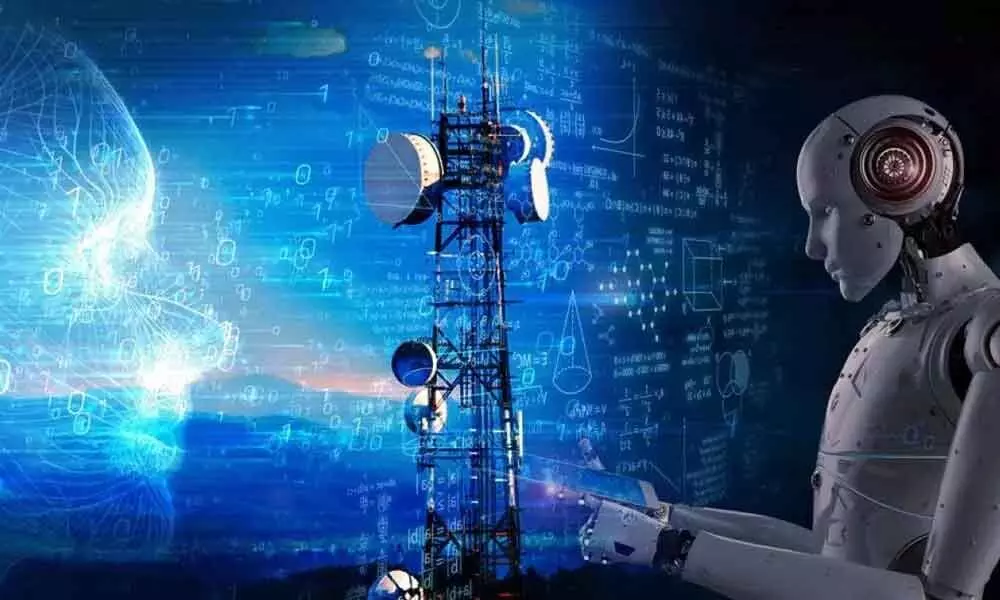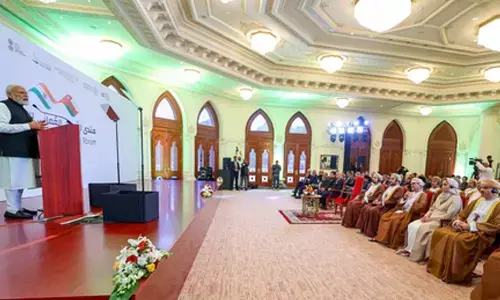How AI revolutioning is telecom sector

The convergence of artificial intelligence and telecom is opening a lot of new possibilities
Artificial Intelligence has applications in all fields including telecommunications. Mobile data analytics, total network optimization, enhancing security, improvement of network operations, control of operational cost and network design are some of the areas where AI can be deployed.
Prediction of consumer behaviour, introduction of such services which will be appreciated by him/her, launching of customised services, reduction of power consumption, improving resilience of the network, predictive maintenance, optimum utilisation of network elements, seamless provision of services and real time fraud detection and fraud prevention are other interesting applications of AI.
As operators move from 4G to 5G implementation, network complexity and cost sharply increase because of implementation of Customer Experience Management (CEM), IOT, SDN (Software Defined Network), NFV (Network Function Virtualisation), 5G Radio access equipment and core infrastructure, 5G for private networks etc. But the average revenue per user is stagnating. This is the motivation for the operators to address the complexity of technology and reduce costs by using AI.
TSPs can deploy AI to improve the efficiency of operations and manage OPEX and CAPEX, to understand and enhance the customer experience, to evolve from cell centric network to user centric network and to achieve new revenue streams by exploring new business models and 5G & IOT enabled use cases.
AI can be used in cellular networks end to end. In the Radio Access portion, AI can be applied in achieving energy efficiency in view of deployment of massive MIMO (Multiple -Input Multiple-Output) technology, load & mobility management, optimization of radio resources in varying traffic conditions and harmonising the network so that radio access network and transport network are optimally utilised to benefit the customers. In Core Network & Data Centres, AI applications can be in trouble shooting, Incident detection & resolution, resources optimisation when traffic demands vary with time and ensuring high system availability & robustness. In Network planning & operations AI can be used for planning & design, provisioning of spectrum and complaint handling & resolution.
Some specific use cases
1. Applying big data analytics to design RAN (Radio Access Network) for improving end customer experience. One lakh cells were analysed in 260 sites for 30 minutes for designing RAN. RAN performance improved by 120 per cent and there was 40 per cent time saving in the design.
2. In a traffic balancing use case, a high traffic scenario has been predicted 4 hours in advance in a particular cell (source cell) using Data labelling and correlation & prediction methodologies. Simultaneously traffic from the source cell was shifted to the other cell (target cell), driving through the closed loop automation. This has resulted in 10 per cent increase in throughput and 3 per cent increase in users.
3. A futuristic application of AI is Intent-based Networking. Let us say that a network operator's objective is to optimise a particular service in a particular area. Knowledge Reasoner translates this business intent into KPIs (Key Performance Indicators) and discovers ML agent that can optimise the targeted KPIs. Trained ML algorithm triggers the model to give recommendation and prediction. Knowledge Reasoner evaluates business intent with the predicted model and implements the required configuration through a closed loop system.
4. Predicting the utilisation of MPLS links and upgrading them at the right time.
5. Anomaly detection in the network links which helps in taking proactive action instead of reactive one in a focused manner. Recurrent neural networks and clustering techniques are used in this use case.
6. Fault prediction based on various data sets using recurrent Neural Network models and initiating action in advance so that overall fault duration is reduced.
7. By clubbing AI, ML and robotics technologies BOT (robot) centre is created which replaces NOC (Network Operation Centre). The service personnel can interact with BOT centre and fix the faults leading to higher efficiency. Network upgradation at the sites from 4G to 5G is also being done expeditiously with the interaction with BOT by the engineering staff
8. AI/ ML can be leveraged for network quality prediction using Memory- augmented Tensorflow model. This model takes two inputs, the last 50 mins of network KPI data and the last 7days of network KPI data, to make network quality predictions for the next five minutes.
9. AI/ ML technology can be used by the management to take decisions on shut down of towers with short term low efficiency and also retiring towers with long term low efficiency.
10. DOT is analysing the subscriber database of all the TSPs through the use of advanced Data Analytics and AI to identify fraudulent mobile connections and also to identify customers who subscribed for more than a specific number of connections across all the TSPs in India.
Face identification using AI for monitoring the number of mobile connections subscribed by a person.
As per DOT norm, in view of security angle, a customer can have not more than nine mobile connections working anywhere in India across all the TSPs. Earlier since linking mobile numbers with Aadhaar numbers was mandatory (before Supreme Court verdict in 2018), it was easy for DOT to find out the number of mobile connections working against any Aadhaar number. Supreme Court verdict in 2018 made giving Aadhaar details voluntary for the prospective customer for obtaining a new connection.
Linking mobile numbers of existing customers with their Aadhaar numbers is also stopped by the TSPs in view of the Supreme Court verdict. So, now storing facial images of customers available in the CAFs (Customer Application Forms) and comparing the facial image of prospective customers with the stored images using AI/ ML model will help the TSPs to ensure that DOT norm is not violated while issuing new mobile connections.
When the prospective customer approaches the Customer Service Centre of the TSP, the details of mobile connections already working for him can be informed to him, after capturing his photograph and comparing it with the facial images of existing customers. If the customer declares that he has not subscribed to a particular connection, that connection can be deactivated by the concerned TSP. If the connections already working are more than nine, a new connection can be denied, unless he surrenders the existing one.
For implementing the above, DOT should carry out Face image extraction from the CAFs of existing customers by suitable API (Application Programming Interface) and store it in a repository. SSFR (Simple Sample Face Recognition) and DeepFace (facial recognition system created by Facebook) approaches can be used for identification of image of the prospective customer.
Way forward
NITI Aayog has released a national strategy on AI for the design and development of advanced technology in India. The National Digital Communications Policy (NDCP) 2018 mandates for bringing in synergies for the deployment and adoption of AI. Trustworthiness of AI implementation is very important. Transparency, security, fairness, free from bias, giving access to data and meeting the national sovereignty requirements are expected in the AI implementation in any sector including telecom, for making responsible AI. The convergence of AI and Telecom is opening a lot of possibilities.
(The author is a former Advisor, Department of Telecommunications (DoT), Government of India)

















